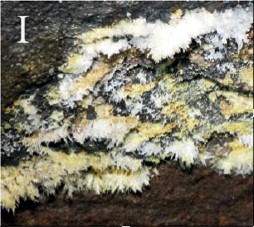Caves and karst-like features in Proterozoic gneiss and Cambrian granite, southern and central Sri Lanka: An introduction
DOI:
https://doi.org/10.3986/ac.v42i1.630Abstract
There has been little study of the geology and geomorphologyof the caves and karst-like features developed in the Proterozoicgneiss and Cambrian granite of Sri Lanka. This lack of studyis surprising given that caves and rockshelters in these rockscontain significant archaeological and cultural sites. Caves andkarren, both mimicking those developed in carbonate rocks,have formed both in gneiss, which is the dominant rock type ofthe Proterozoic crust of the island and in granite. In addition tooverhangs, boulder caves, soil pipes and tectonic caves, tunnelcaves, arch caves and block breakdown caves of significant sizeare developed in siliceous rocks in Sri Lanka. While metamorphoseddolomites are interfoliated within the gneissic suite,simple removal of carbonate by solution from within the surroundingrock cannot account for all or most of the speleogenesisobserved. While spalling and breakdown are responsiblefor cave enlargement cave initiation is probably due to eitherphreatic solution of silicates and/or phantom rock processes.Speleothems and cave minerals including silicates, phosphates,gypsum, carbonates and niter are found in the caves. Activesilicate speleothems are not restricted to joints and fissures andsuggest that solution of silicates is currently occurring withinthe body of the rock in the vadose zone. While guano is thelikely source of the phosphate, sulfate and nitrate, the sourceof the calcium in the carbonates remains unclear. Caves in theintrusive and metamorphic rocks of Sri Lanka are enigmatic.They are unexpectedly similar in appearance to their carbonatekarst counterparts. Continuing research will allow them tohold a mirror to our understanding of speleogenesis, mineralizationand sedimentation in carbonate karst caves.
Downloads

Downloads
Published
How to Cite
Issue
Section
License
Authors guarantee that the work is their own original creation and does not infringe any statutory or common-law copyright or any proprietary right of any third party. In case of claims by third parties, authors commit their self to defend the interests of the publisher, and shall cover any potential costs.
More in: Submission chapter




